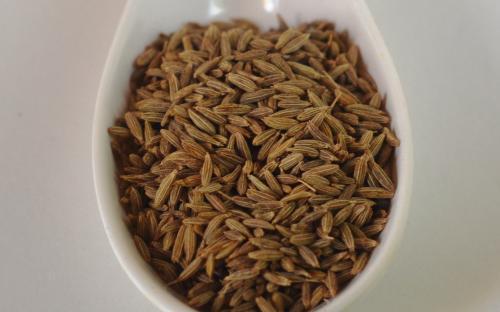Cumin (jeera)
It comes from the parsley family. The seeds are oval with ridges, greenish-beige in color. Cumin is usually dry-fried before use (drop the whole seeds into a hot dry pan and cook until the roasted fragrance emerges). It is used to flavor rice, stuffed vegetables, many savory dishes and curries. It combines well with cilantro and is widely used in beef dishes.
Cumin – Names in different Indian Languages.
Hindi– Jeera, Bengal – Jire,, Gujrati - Jiru, Punjabi – Jeera
Tamil - Jeeragam, Urdu – Zeera
Nutritional information
Although cumin seeds contain a relatively large percentage of iron, extremely large quantities of cumin would need to be consumed for it to serve as a significant dietary source (see nutrition data).
1tbsp of cumin spices contains the following nutritional information according to the USDA:
- Calories: 22
- Fat(g): 1.34
- Carbohydrates(g): 2.63
- Fibers(g): 0.6
- Protein: 0.25
Culinary Uses
Cumin can be used ground or as whole seeds. It helps to add an earthy and warming feeling to cooking, making it a staple in certain stews and soups, as well as curries Cumin is used mainly where highly spiced foods are preferred. It features in Indian, Eastern, Middle Eastern, Mexican, Portuguese and Spanish cookery. It is an ingredient of most curry powders and many sspice mixtures, and is used in stews, grills - especially lamb - and chicken dishes.
Zeera pani is a refreshing and appetising Indian drink made from cumin and tamarind water. Similarly there are other Indian dishes like Zeera Rice and lemon rice were it is an essential ingredient.
Storage
The seeds should be lightly roasted before being used whole or ground to bring out the aroma. Cumin may also be pounded with other spices in mixtures such as curry powder. Ground cumin must be kept airtight, to retain its pungency.
Precaution
This spice should be used with restraint - it can exclude all the other flavours in a dish. Less than a teaspoon of it will flavour a meal for four.
